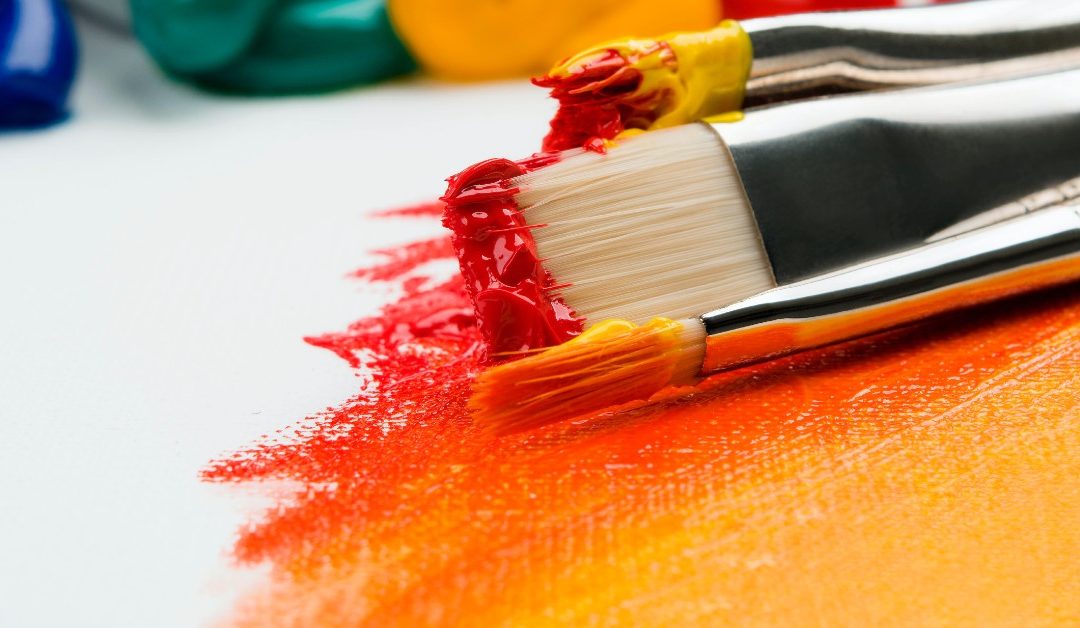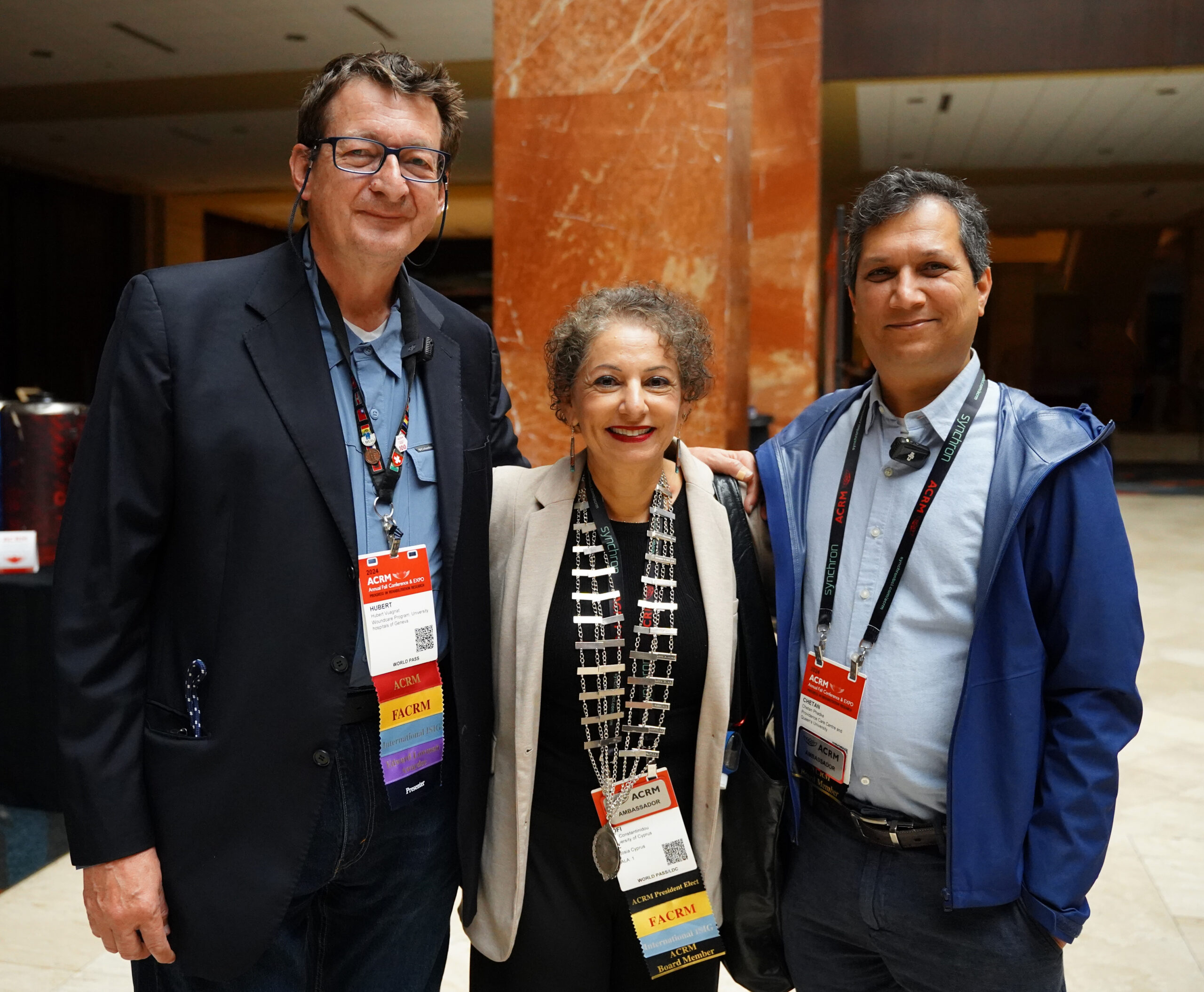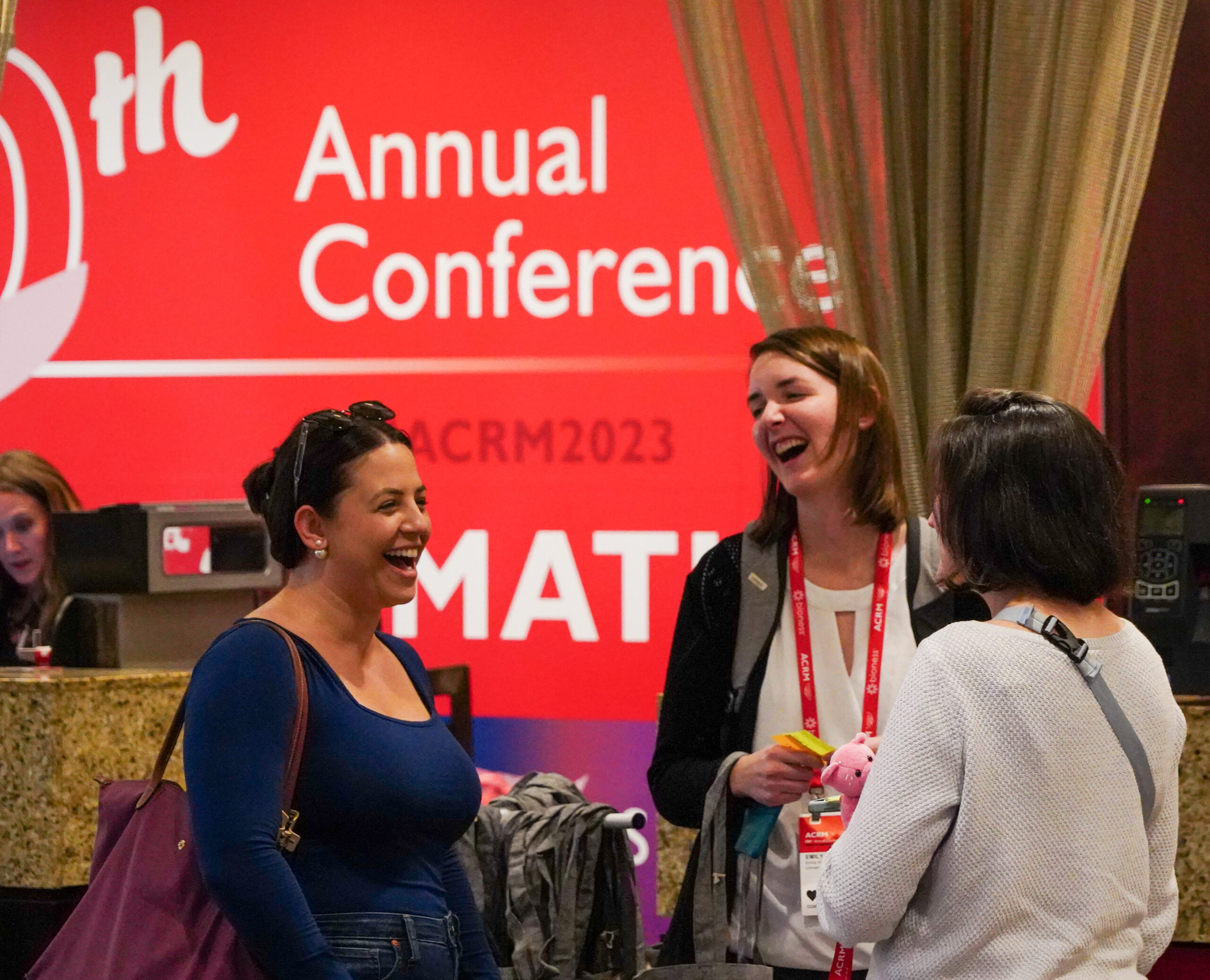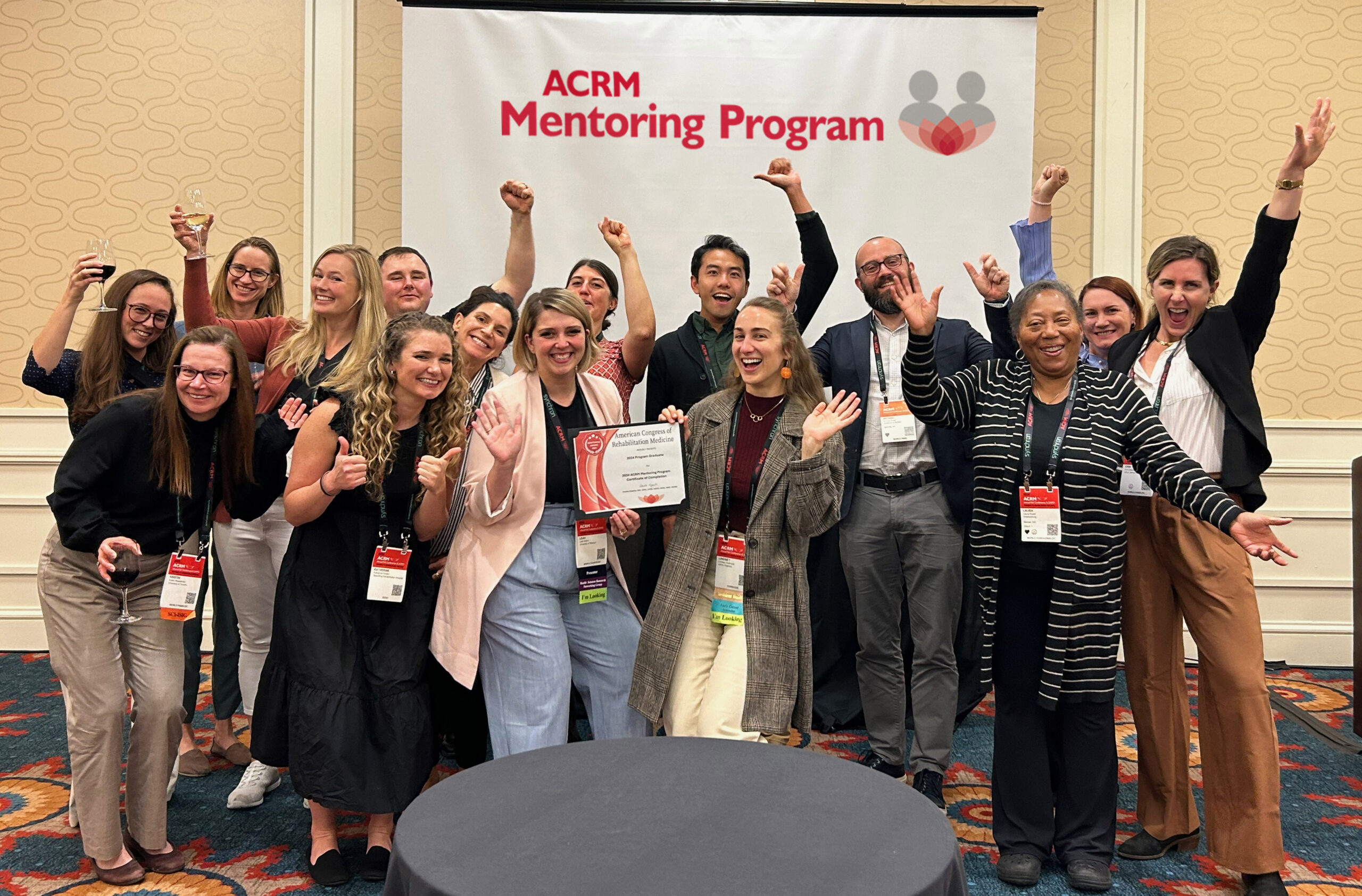Here at ACRM, one of our interdisciplinary groups is Arts & Neuroscience Networking Group (ANNG) and it’s mission is to build awareness for the application of arts and neuroscience in rehabilitation. How does creativity function in the brain? How can it help those working in rehabilitation medicine better serve their patients?
While decades of cognitive-behavioral research has informed our understanding of creativity, there is less rehabilitation medicine in neuroscience to back up these findings. After all, brain research is a young field, and here at ACRM, we’re eager to see where creativity research and neuroscience models go in the future!
In today’s blog post, we’re looking specifically at the linkages between arts, learning, and neuroscience, in order to better understand how practitioners can incorporate art therapy into their rehabilitation medicine practice. Continue reading to learn more and if you’d like to join ACRM or the ANNG group, enroll today!
How The Brain Is Affected By Art
A lot is happening both in the mind and the body when we make art, and it can be used for therapeutic means, both in rehabilitation medicine and on your own. Christianne Strang, a professor of neurosciences at the University of Alabama Birmingham and former president of the American Art Therapy Association says: “Creativity in and of itself is important for remaining healthy, remaining connected to yourself and connected to the world,”
Any type of creative expression allows you to imagine new ways to communicate and engage with the world, as well as engages the brain’s neuroplasticity, helping patients recover from things like traumatic brain injuries or stroke.
Making art is good for everyone, not just our patients in the field of rehabilitation medicine! Here are a few of the benefits and ways the brain is affected by art:
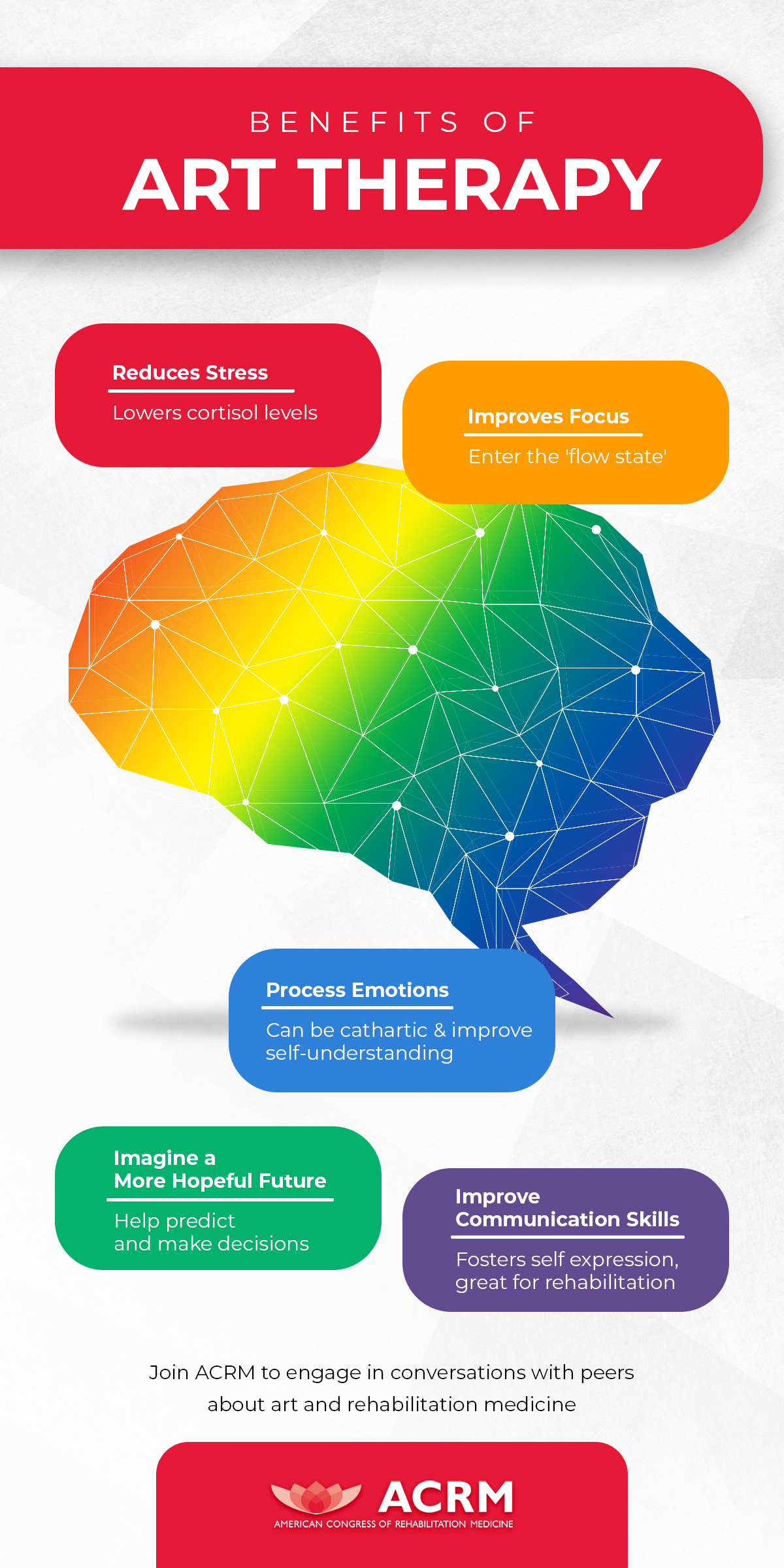
Lowers stress
Research in the field of art therapy is still ongoing, but many are finding that engaging in art therapy reduces stress. Creating art can reduce cortisol levels for both those who identify as artists and those who don’t, so no matter your skill level, everyone can benefit from making art.
Deep Focus
Art allows people to enter a “flow state,” or that feeling when you’re in the zone and lose sense of yourself and of time. Making art can help you be more present, and it activates a variety of networks, including relaxed reflective state, focused attention, and pleasure.
Process Emotions
Connecting with art can help anyone decrease anxiety and build coping skills, and for those going through serious distress, a professional art therapist can help to guide the process. Art allows you to express feelings and memories in ways other than words. Making art can be a cathartic experience that provides a sense of relief.
Imagine a More Hopeful Future
The brain is a predictive machine that uses information about what has happened to make decisions about what we need to do next to survive. Creating art allows you to make decisions and interpret images, figuring out what it means and helping you face potential futures as well as imagine better, more hopeful ones.
Art and Neuroscience
There is increasing evidence in rehabilitation medicine and the field of neuroscience that art enhances brain function by impacting brain wave patterns, emotions, and the nervous system. Art can also raise serotonin levels. These benefits don’t just come from making art, they also occur by experiencing art. Observing art can stimulate the creation of new neural pathways and ways of thinking.
In a study conducted by Professor Semir Zeki, chair in neuroaesthetics at University College London, participants underwent brain scans while being shown images of paintings by major artists. The study found that when people viewed the art they thought was most beautiful, blood flow increased by as much as 10% to the reign of the brain associated with pleasure — the equivalent to looking at a loved one.
Art accesses many of the advanced processes of the human brain, such as intuitive analysis, expressivity, and embodied cognition. Artists are often better observers and have better memory, and this may be due to how art affects the brain’s plasticity.
ACRM – American Congress of Rehabilitation Medicine
The mission of our non-profit organization is to improve the lives of disabled people, through rehabilitation medicine and research in a variety of fields, including art and neuroscience. Our research groups cover a wide range of topics, from traumatic brain injury to neuroplasticity, sports rehabilitation, cancer, and more.
Our team is proud to work with hospitals, universities, professional and advocacy organizations, and rehabilitation professionals around the world. We have 3,000+ members from more than 65 countries and produce the ACRM Journal. Learn about the benefits of joining ACRM as well as member dues and how to apply. You can also learn more about the ACRM Conference and register for either in person or online here. If you enjoyed this article, learn more from the Arts & Neuroscience Networking Group (ANNG).


